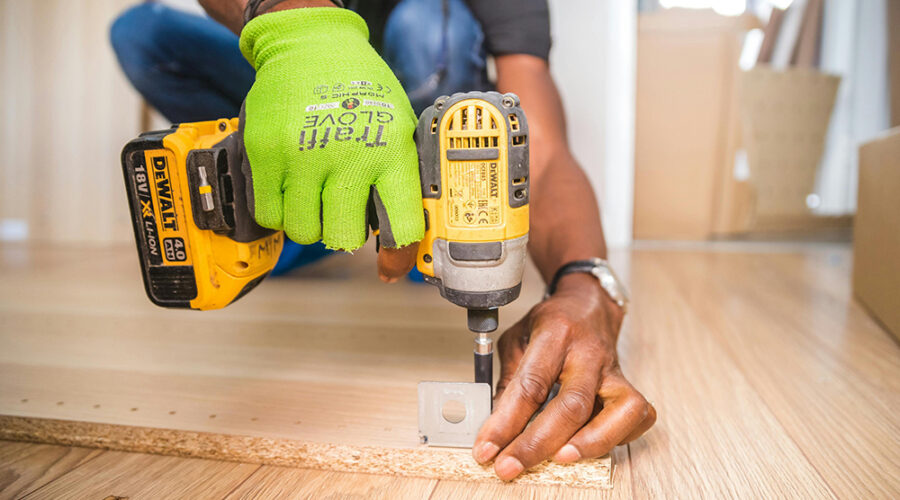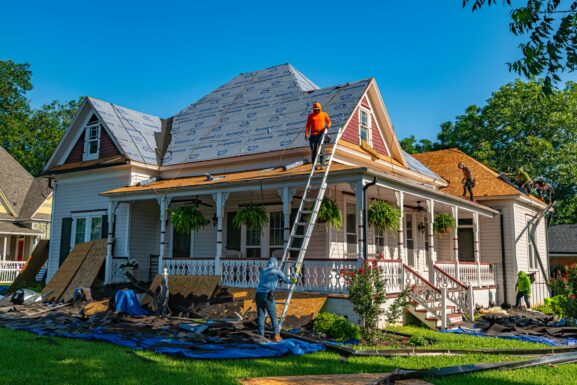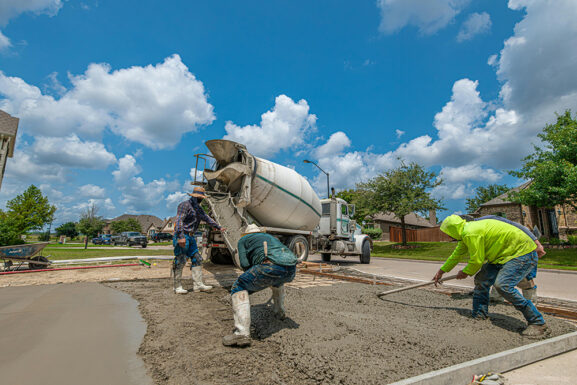Getting Paid Faster: Payment Terms That Actually Work for Contractors
You’ve just completed a beautiful kitchen remodel. The client is thrilled, you’ve cleaned up perfectly, and the final photos look amazing. You submit your invoice with standard “Net 30” terms, expecting payment within a month.
Six weeks later, you’re still waiting for your money.
Sound familiar? Late payments are the silent killer of contractor businesses. According to the National Federation of Independent Business, small businesses wait an average of 22 days beyond their payment terms to get paid. For contractors, this number is often much higher.
The problem isn’t just the delay—it’s the cash flow crunch that forces you to either delay paying your own bills or turn down new work because you can’t afford materials upfront. Some contractors are essentially providing free loans to their clients while struggling to keep their own businesses afloat.
But here’s what successful contractors know: Payment terms aren’t just about when you get paid—they’re about setting expectations, protecting your cash flow, and positioning your business professionally. The right payment structure can transform your cash flow from a constant stress to a competitive advantage.
Why Standard Payment Terms Fail Contractors
The “Net 30” Trap
Most contractors default to “Net 30” because it sounds professional. But this standard business term wasn’t designed for contractor businesses. It assumes a world where companies have accounting departments, predictable cash flows, and corporate payment processes.
Homeowners don’t operate like businesses. They might pay monthly bills on the 15th, get paid biweekly, or simply forget about invoices that aren’t immediately urgent. What seems reasonable to a business-to-business transaction can be devastating for a contractor’s cash flow.
Net 30 gives clients permission to wait. When you say “pay me in 30 days,” many clients hear “I don’t really need this money for a month.” They’ll prioritize other expenses and put your invoice in the “deal with later” pile.
The Hidden Costs of Delayed Payments
Every day you wait for payment costs you money. You’re essentially providing free financing to your clients while you pay interest on business credit cards, delay equipment purchases, or miss opportunities because you can’t afford materials for new jobs.
Late payments create a cascade of problems. You can’t pay suppliers on time, which damages those relationships. You can’t take advantage of early payment discounts. You might overdraw business accounts and pay fees.
The opportunity cost is massive. Money sitting in your client’s account instead of yours isn’t earning interest, isn’t available for business growth, and isn’t helping you take advantage of material deals or equipment purchases.
Payment Structures That Work
Progress Payments: The Foundation of Good Cash Flow
Break large projects into payment milestones. Instead of waiting until project completion for full payment, structure payments around project phases.
Example for a $15,000 bathroom remodel:
- 30% down payment ($4,500) before work begins
- 30% ($4,500) after demolition and rough plumbing/electrical
- 30% ($4,500) after tile and fixture installation
- 10% ($1,500) upon completion and client walkthrough
This structure protects both you and the client. You’re never more than one phase ahead in expenses, and clients see clear value before each payment. The final 10% ensures you return to address any punch list items.
Adjust percentages based on project size and risk. Smaller jobs might require 50% down, while larger projects with established clients might work with smaller deposits.
The “Net 10” Advantage
Most contractors who switch from Net 30 to Net 10 see dramatic improvements in payment speed. The shorter timeframe creates urgency without seeming unreasonable.
Net 10 positions your business as efficient and professional. It signals that you’re running a tight operation and expect the same professionalism from clients.
Consider offering early payment incentives. “2% discount if paid within 5 days” can motivate faster payment while still leaving you profitable. A 2% discount is much cheaper than the cash flow problems caused by late payments.
Same-Day Payment for Smaller Jobs
Service calls and small repairs should be paid immediately. When you fix a water heater or repair a broken outlet, there’s no reason to wait for payment.
“Payment due upon completion” works for jobs under $2,000. This eliminates collection issues entirely and improves your cash flow significantly.
Offer multiple payment options. Accept cash, checks, credit cards, and digital payments through services like Square or PayPal. The easier you make it to pay, the faster you’ll get paid.
Advanced Payment Strategies
Material Advances for Large Projects
For projects with significant material costs, require material advances. Instead of fronting $8,000 for kitchen cabinets, require clients to pay for materials before ordering.
Structure it professionally: “Material costs of $8,000 are due before ordering to secure your cabinet delivery date and lock in current pricing.”
This eliminates your largest cash flow risk while providing a legitimate reason for the advance payment.
Automatic Payment Systems
Set up automatic payments for regular clients. Use services like QuickBooks Payments or FreshBooks to automatically charge clients’ cards or bank accounts when invoices are due.
Present automatic payments as a convenience. “We can set up automatic payments so you never have to worry about missing due dates” sounds better than “We don’t trust you to pay on time.”
Offer a small discount for automatic payment enrollment. Even a 1% discount for clients who set up automatic payments can dramatically improve your cash flow.
Contract Language That Protects You
Clear Payment Terms in Writing
Your contract should spell out payment terms in plain English. Don’t rely on industry jargon or assume clients understand standard terms.
Instead of: “Payment terms: Net 10” Write: “Invoice amount is due within 10 days of invoice date. Late payments may incur additional charges.”
Include specific due dates for progress payments. “Second payment of $4,500 is due within 5 days of rough plumbing inspection approval.”
Late Payment Penalties That Actually Deter
Most contractors charge 1.5% monthly late fees, which clients often view as just the cost of delayed payment. Consider more substantial penalties that actually motivate timely payment.
Example escalating penalty structure:
- 1-15 days late: 5% penalty
- 16-30 days late: Additional 10% penalty
- 31+ days late: Additional 15% penalty plus potential work stoppage
Make sure your state allows these penalties and that they’re clearly disclosed in your contract.
Work Stoppage Clauses
Include clear language about work stoppage for non-payment. “Work will be suspended if payments are more than 10 days past due, and will not resume until account is current plus applicable late fees.”
This gives you legal protection to stop work without being in breach of contract when clients don’t pay as agreed.
Also include material lien rights language to protect your ability to file mechanics’ liens if necessary.
Making Payment Easy and Professional
Streamlined Invoicing Systems
Professional invoices get paid faster than handwritten bills. Use invoicing software that creates clean, detailed invoices with your logo and contact information.
Include project photos with invoices. Visual reminders of the work completed help justify the charges and make invoices more memorable.
Send invoices immediately upon reaching payment milestones. Don’t wait until the end of the week or month—send them the same day work is completed.
Multiple Payment Options
The easier you make it to pay, the faster you’ll get paid. Accept as many payment methods as your profit margins allow.
Essential payment options:
- Cash and checks (traditional but immediate)
- Credit and debit cards (convenient for clients)
- Bank transfers/ACH (lower fees than cards)
- Digital wallets (PayPal, Venmo for tech-savvy clients)
Consider offering payment plans for larger projects. “Split this payment over 3 months with automatic charges” can help clients say yes to projects they might otherwise postpone.
Professional Communication
Follow up on overdue payments professionally but persistently. Create a standard communication schedule:
5 days past due: Friendly reminder email 10 days past due: Phone call to check on payment status 15 days past due: Formal notice with late fees applied 20 days past due: Work stoppage notice if applicable
Document all communication regarding payments for potential collection or legal action.
Industry-Specific Payment Strategies
Emergency and Service Work
Emergency calls should always be payment-on-completion. When someone calls at 10 PM with a plumbing emergency, they should pay before you leave the job site.
Use the urgency to your advantage. “Emergency service rates apply, and payment is due upon completion” sounds reasonable when someone desperately needs help.
Consider premium pricing for immediate payment. Emergency rates that include immediate payment can be higher than scheduled work with standard payment terms.
Commercial vs. Residential Work
Commercial clients often have formal payment processes that make Net 30 or even Net 45 unavoidable. Factor this into your pricing and cash flow planning.
Residential clients typically can pay faster but may need more flexible options. Offer payment plans or financing through services like GreenSky for larger residential projects.
When Clients Don’t Pay
The Collection Process
Start collection efforts immediately when payments become overdue. Waiting makes collection more difficult and damages your cash flow longer.
Follow your documented communication schedule but escalate appropriately. Professional persistence often resolves payment issues without damaging client relationships.
Know when to involve professionals. For amounts over $5,000, consider hiring collection agencies or attorneys who specialize in construction law.
Protecting Yourself Legally
File mechanics’ liens when appropriate. Most states give contractors strong lien rights, but there are strict deadlines and notice requirements. Don’t wait until it’s too late.
Keep detailed records of all work performed, materials supplied, and communication with clients. Good documentation is essential for successful collection efforts.
Building Better Client Relationships
Educating Clients About Your Payment Terms
Explain the reasoning behind your payment structure. “Progress payments help us maintain quality by ensuring we can purchase the best materials for your project” sounds better than “We need money upfront.”
Position fast payment as professionalism. “We work with clients who value efficiency and professionalism in all aspects of their projects” attracts the right type of customers.
Rewarding Good Payment Behavior
Offer loyalty benefits to clients who consistently pay early. Priority scheduling, small discounts, or bonus services reward good payment behavior.
Consider formal preferred client programs for customers with established payment histories.
The Bottom Line on Payment Terms
Getting paid faster isn’t about being pushy—it’s about being professional. Clear expectations, reasonable terms, and consistent follow-through protect both you and your clients.
Your payment terms are part of your brand. They signal whether you run a professional operation or a casual side business. Clients who respect professional payment terms are usually the clients you want to work with long-term.
Cash flow is the lifeblood of your business. Every improvement in payment speed gives you more flexibility to take advantage of opportunities, invest in better equipment, and grow your business strategically.
The contractors who master payment terms don’t just get paid faster—they build stronger businesses with better clients and more predictable cash flow.
Disclosure: Some links in this article are affiliate partnerships that help support ContractorWorldLand at no extra cost to you. We only recommend tools and services we believe provide genuine value to contractors.



